In an English Country Garden (Part 4, Chapter 2)
A tale of two rank amateurs attempting to work with Nature. Revere the invertebrates
ENVIRONMENTECO-GARDENING
1/1/20256 min read
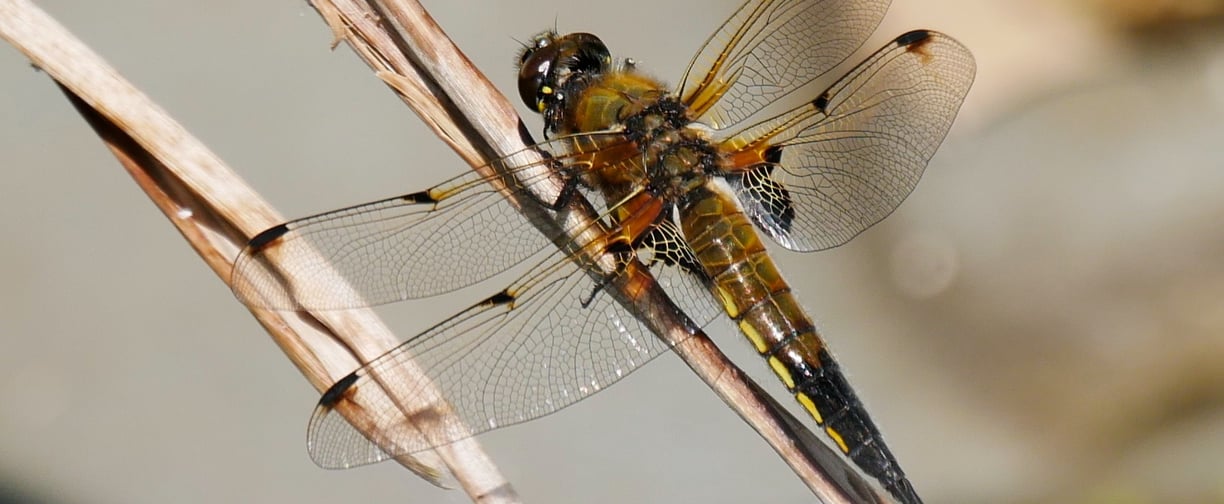

Of all the wildlife in a garden the invertebrates are arguably the most important and the most underappreciated. They pollinate, they help breakdown waste organic material, they provide food for a host of other wildlife, they oxygenate the soil and much more - we would find it difficult, if not impossible. to live without them.
We have done much to improve / create the conditions where invertebrates will flourish - two ponds, bug hotels, wood piles, wild areas, added plants beloved by pollinators, don't sweep up the autumn leaves, no insecticides and virtually no herbicides etc. etc. - and it seems to be working. There is more to be done (there always will be), but we have made a solid start.
In this (the final part of the introduction to our garden) I will have a look at the invertebrates that I have managed to photograph. It is, by no means, a complete catalogue because I (like many others I suspect) have tended to concentrate on the more glamorous and familiar species and overlooked the less attractive (but no less important) and hard to find species.
Over the year I will be taking a more systematic approach and will actively attempt to get a more complete picture of the invertebrates (and other wildlife) we have in the garden. Towards the end of each month I will publish an update of what I have discovered, the first update will appear at the end of January 2025.
Click on any image to see it full size
Picture: Buff Tailed Bumblebee and Marmalade Hoverfly on a Lavatera
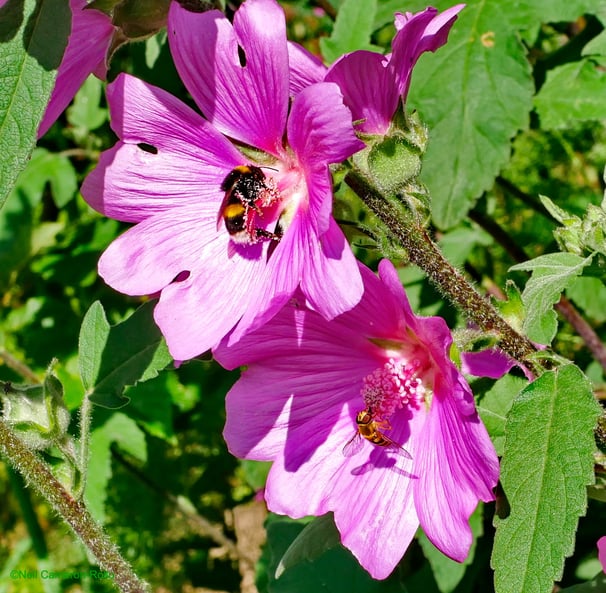

Damselflies and Dragonflies
These colourful, beautiful insects are regular visitors to our garden. So far I have managed to identify and photograph four species of Damselfly and three species of Dragonfly.
The most recent and most spectacular visitor is the Migrant Hawker (Aeshna mixta) which we saw for the first time in August 2024. It eats insects which it catches on the wing.
Dragonflies and damselflies are part of the Odonata order, meaning 'toothed ones'. Dragonflies were one of the first flying insects and date back around 300 million years, their flying ability is second to none, mainly because they can beat each wing separately if needed.
There are 36 species of Dragonfly and 21 species of Damselfly in the UK so we have a way to go before we get the full set !
To find out more visit https://www.woodlandtrust.org.uk/blog/2018/07/british-dragonflies/
Picture: Migrant Hawker (Aeshna mixta) resting on the dried remains of a Foxglove
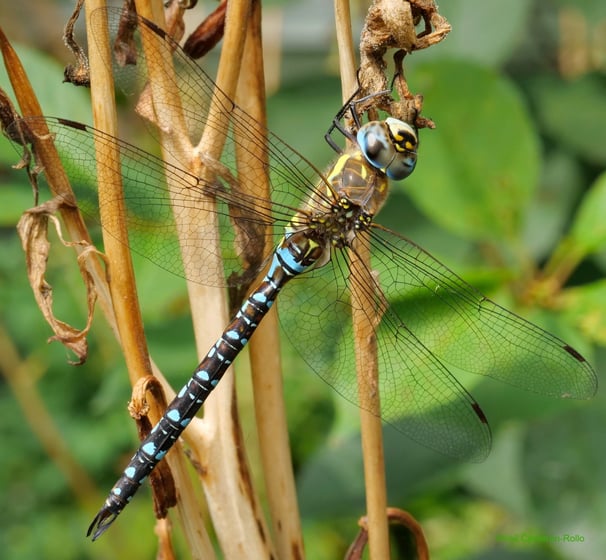

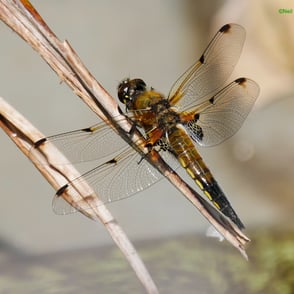
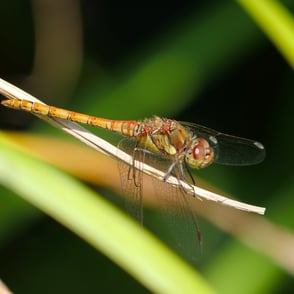

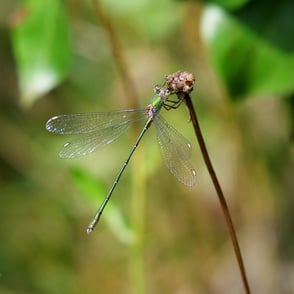
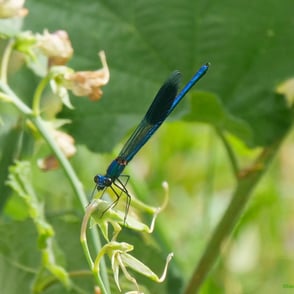
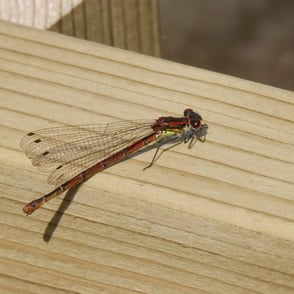
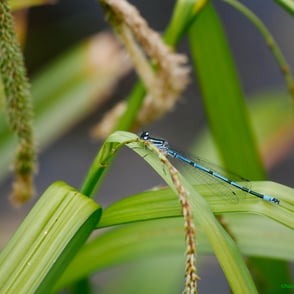
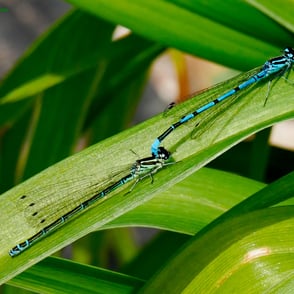
Gallery (reading left to right, top to bottom): Four Spotted Chaser (Libellula quadrimaculata), Common Darter (Sympetrum striolatum), Migrant Hawker (Aeshna mixta), Willow Emerald Damselfly (Chalcolestes viridis), Banded Demoiselle (Calopteryx splendens), Large Red Damselfly (Pyrrhosoma nymphula), Azure Damselfly (Coenagrion puella), Azure Damselfly (Male and Female getting ready to mate)
Bees, Hoverflies and Wasps
These three species are extremely important to any garden and the wider environment. Bees are the chief pollinators of the majority of food crops that we as humans rely upon to live, without them the human race (and the wider environment) would be in deep trouble.
Hoverflies perform two important functions, in the larval stage they are at least as important as Ladybirds in tackling garden pests like greenfly, in their adult stage they are very important pollinators. Some species are also important in breaking down organic waste.
Wasps are important to the health of a garden, in the early summer they catch garden pests such as aphids and caterpillars to feed to their grubs, later in the year they seek sweeter foods and become another vital pollinator. Left alone they will not hurt you, it is only if their nests are disturbed that they will attack.
I suspect I may have got some of the IDs wrong (the differences between some of the species is small and I am no expert !)in the gallery below, if you spot an error please let me know and I will make a correction
Picture: Marmalade Hoverfly (Episyrphus balteatus) on a Lily
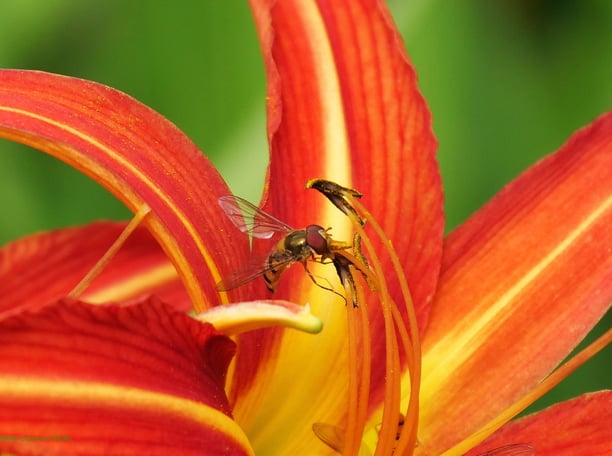

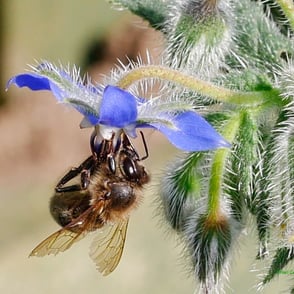
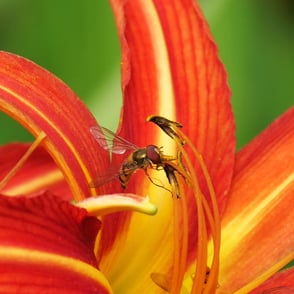
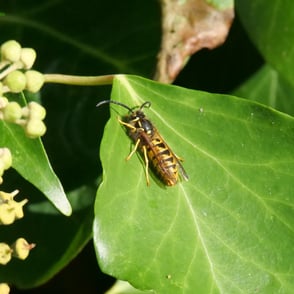
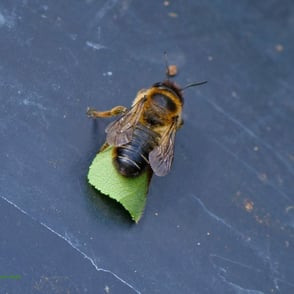
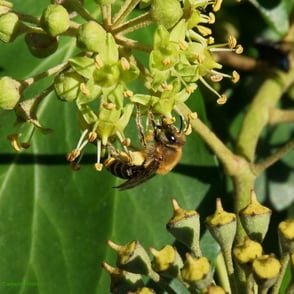
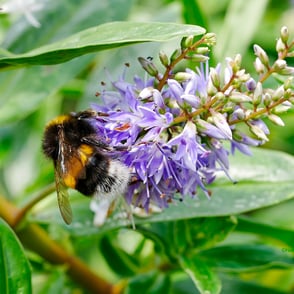
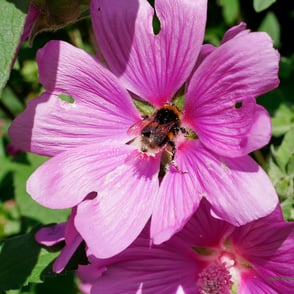
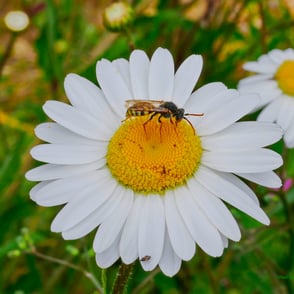
Gallery (reading left to right, top to bottom): Species not known, note the ragged wing tips - this is an older bee. Marmalade Hoverfly (Episyrphus balteatus). Common Wasp (Vespula vulgaris), Patchwork leafcutter bee (Megachile centuncularis). Ivy Bee (Megachile centuncularis). Buff-tailed bumblebee (Bombus terrestris). Buff-tailed bumblebee (Bombus terrestris). Gooden's Nomad Bee (Nomada goodeniana).
Butterflies and Moths
Butterflies and moths are a key indicator of biodiversity and a healthy eco-system, their fragility makes them particularly vulnerable to changes in the environment. They are also a key part of the food chain.
To quote the Butterfly Conservation Trust ' Areas rich in butterflies and moths are rich in other invertebrates. These collectively provide a wide range of environmental benefits, including pollination and natural pest control.
Moths and butterflies are an important element of the food chain and are prey for birds, bats and other insectivorous animals (for example, in Britain and Ireland, Blue Tits eat an estimated 50 billion moth caterpillars each year).'
https://butterfly-conservation.org/butterflies/why-butterflies-matter
Basically, if you plant to support butterflies and moths, the rest will follow.
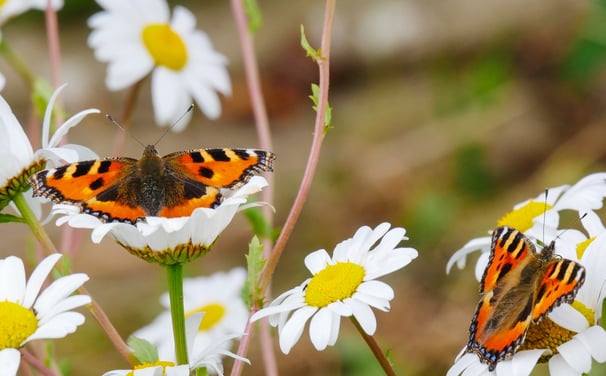

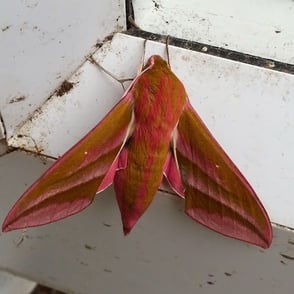
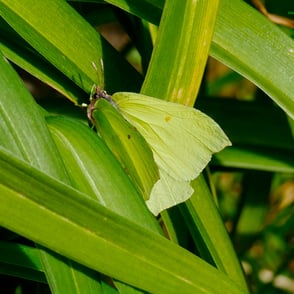
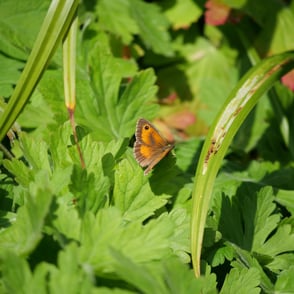
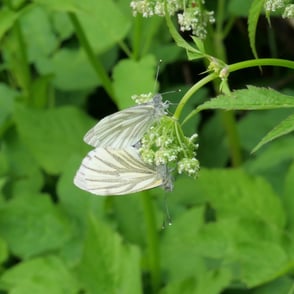
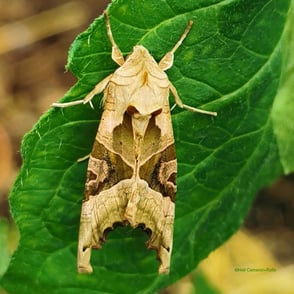
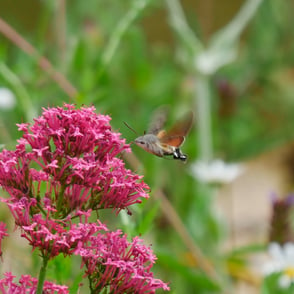
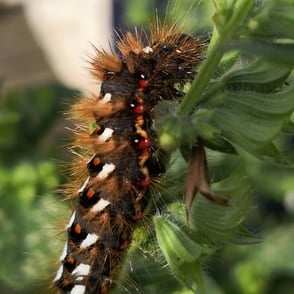
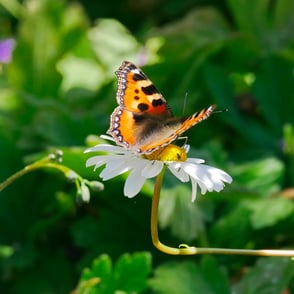
Gallery (reading left to right, top to bottom): Elephant Hawk Moth (Deilephila elpenor). Brimstone (Gonepteryx rhamni). Gatekeeper (Pyronia tithonus). Green-veined White (Pieris napi). Angle Shades (Phlogophora meticulosa). Humming-bird Hawk Moth (Macroglossum stellatarum). Knot Grass Moth caterpillar (Acronicta rumicis). Small Tortoiseshell (Aglais urticae)
The rest plus some pests...
This section briefly covers the insects that I have managed to photograph that don't fit into the other three categories. I know we have a lot more insects in the garden than I have photographed, this year (2025) I am determined to track down more of our little friends.
If you grow lilies and fritillaries then you will probably not want to see is Lilioceris lilii otherwise known as the Red Lily Beetle. It lays solely on lilies and fritillaries, the resulting grubs eat the leaves and can cause significant damage to the plants.
Control is difficult, we have to inspect the plants regularly in order to eliminate the adults and scrape off the grubs. To find out more visit https://www.rhs.org.uk/biodiversity/lily-beetle
Picture: Red Lily Beetle (Lilioceris lilii)
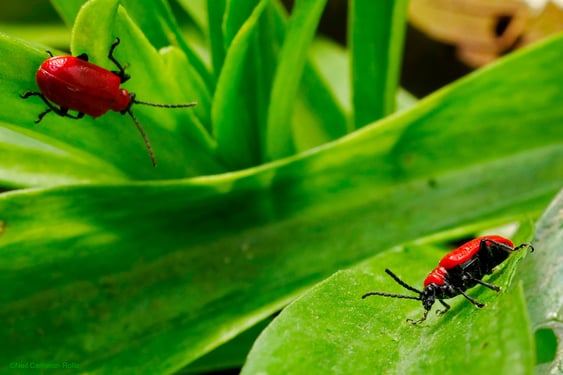

One insect you should be very pleased to see in your garden is the Ladybird.
Both the grubs and the adults feed on greenfly and will also tackle other insects given the chance. The most common species in the UK is the 7 Spot, during the course of it's year long life it can munch it's way through 5000 greenfly.
They hibernate over Winter in secluded spots like hollow plant stems and garden buildings emerging again in March / April.
According to the Woodland Trust 'The name ‘ladybird’ comes from Christianity in which the ‘lady’ is the Virgin Mary and the red colour of the insect is her cloak. The seven spots are her seven joys and seven sorrows.'
https://www.woodlandtrust.org.uk/trees-woods-and-wildlife/animals/beetles/7-spot-ladybird/
Picture: 7 Spot Ladybirds (Coccinella septempunctata) eating pests on a thistle.
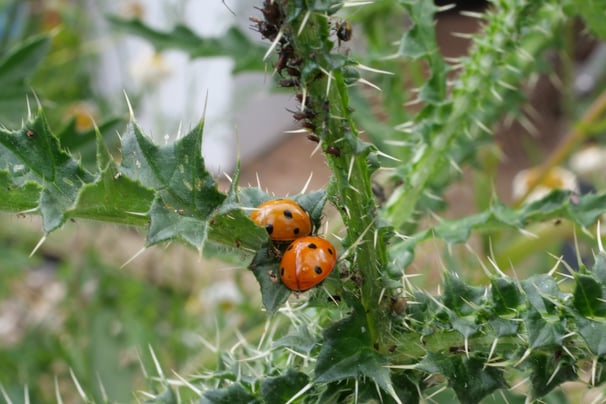

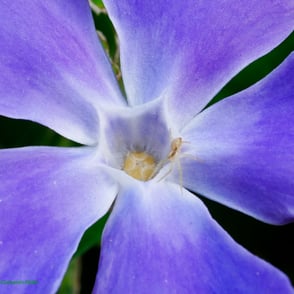
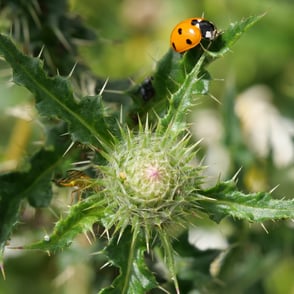
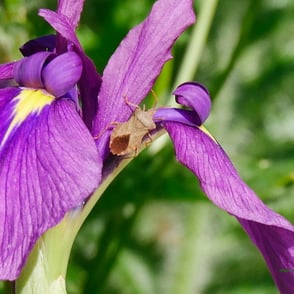
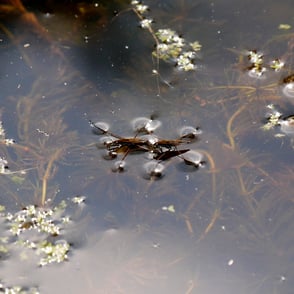
Gallery (reading left to right): Spider - Species Unknown. 7 Spot Ladybirds (Coccinella septempunctata). Dock Bug (Coreus marginatus). Pond Skater (Gerris lacustris)
That concludes the introduction to our garden, I hope you have found it interesting and informative. The first of the monthly updates (I already have interesting news about previously unrecorded - at least in our garden - species) will appear towards the end of this month. In the meantime I will also be working on new travel blogs.
